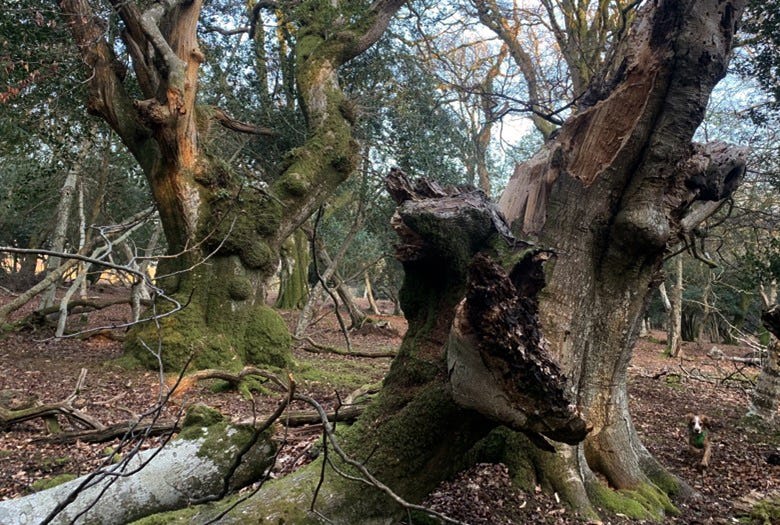It’s that time of year again. The long light evenings and warm glow of the summer sun are coming to an end. The screaming and screeching of our beloved swifts and swallows are slipping into memory. Yes, October and November bring colder, shorter nights, but also the russets and golds of autumn leaves glowing in crisp sunlight, the crunching of dried leaves, and the cosy, slightly daunting feeling that everything is hunkering down to brace for winter.
And, of course, it is a time of dead, rotting things, creepy crawlies and fantastical fungi - and that is a cause for celebration. Whilst many people focus on the dread of Halloween, in Mexico, on the 1st and 2nd of November, people gather to celebrate el Dia de los Muertos – The Day of the Dead. The Day of the Dead isn’t a gloomy, scary time but a jubilant celebration of death in the collective memory of loved ones who have moved on.
One of the key features that has made the human race so successful is empathy – the ability to understand the thoughts, perspective, and emotions of another person. Our empathetic abilities don’t stop at the trials and tribulations of each other. The nation’s recent collective outpouring of anger, grief and love for the ancient sycamore, that occupied Sycamore Gap, demonstrates the deep emotional connection we feel to our leafy friends (see our response to the Sycamore Gap felling here).
Do not despair though, in this article, we will explore death as a beginning for trees, opening the door for a complexity of life that is not to be feared and mourned, but embraced, celebrated, and championed. This is Day of the Deadwood.
Examples of deadwood are all around us, whether an ancient, stag-headed tree in a field, logs lying on the floor in your local park, or dead trees just about managing to stay upright within woodlands. Deadwood is part of the final, and arguably most important and interesting part of a tree’s life, and the beginning of so much more.
Wood stores a lot of nutrients within its structure. Once a tree, or part of a tree, has reached the end of its life it is decomposed by a complex combination of bacteria, fungi and other microorganisms which breaks it down and releases these nutrients back into the soil. This process is called nutrient cycling and is the building block of all life, feeding new growth of plants, and in turn microorganisms, fungi, insects, birds, amphibians, mammals, and us, in healthy ecosystems. It is essential for new life to form. This is why areas rich in deadwood, such as our ancient woodlands, are so biodiverse.
In fact, more than 2,000 different invertebrate species are dependent on decaying wood to complete their lifecycle. Deadwood houses and feeds some of our most beloved wildlife, from grass snakes and great-crested newts, to green woodpeckers and Bechstein’s bats nesting and roosting in hollows and cavities.
The fungal importance of deadwood, and in particular, undisturbed soil where deadwood has been allowed to decay for very long periods of time, is only recently beginning to be uncovered. Extensive mycorrhizal networks of fungal hyphae, tap into the rooting systems of whole communities of trees, allow the sharing of nutrients to help stressed trees, the sending of signals to warn of predation and assistance when dealing with periods of drought. All in return for some of the trees’ energy. The role of deadwood and decaying matter within these networks is massive, feeding whole tree and plant communities with recycled nutrients to be used again.
And it’s not just terrestrial landscapes, standing and fallen deadwood can help improve the health of our waterways, slowing the flow of watercourses, preventing flooding and filtering pollutants as well as forming part of the life cycle of riverine fish and invertebrate species.
The way we see deadwood has changed in recent years. Previously, the hollowing out of an old tree was seen as detrimental, but we now know that it is an essential part of the tree’s life, using resources stored within the trunk to provide nutrients for the tree in its old age when it might be struggling. Think along the lines of the tree rigging itself up with a nutrient drip for its latter years.

Previously it was thought that deadwood, both attached to a tree or on the ground, could negatively impact a tree’s health by increasing risk of infection by pests and diseases, and so it was routine practise to remove it. In some cases, this is still necessary, such as removing wood material infected with aggressive forms of honey fungus, but we are now much more aware of the benefits, in addition to the problems, associated with deadwood.
In more public areas, such as in our towns and cities, parks, and gardens, clearly there are safety concerns regarding deadwood falling and injuring people, and safety must be paramount to tree management in these environments. However, the way an ancient tree crumbling in a field is managed can be completely different to the same tree located next to a playground in a busy park. Through tree risk monitoring and data analysis, the arboricultural industry is beginning to build up a more detailed understanding of the risks of deadwood and structural weaknesses in trees considering different factors such as species, history, management, and local growing conditions.
This allows for a more educated, rational deadwood retention and removal management plan. However, the range of biological, environmental, and social aspects to consider makes risk management highly complex and highlights the need for skilled people to be managing our urban and rural treescapes. We need to ensure that tree managers have the resources available to be able to properly manage trees, record tree risk instances and add data regularly to a collective pot of shared knowledge of safe tree management.
There has been amazing progress in tackling the issue of ‘tidiness’ when it comes to managing our public spaces. Habitat piles, bug hotels, natural (deadwood) play equipment, and in-situ deadwood are more commonplace in our parks and gardens today. Tidiness is not the natural way, and over-managed trees and woodlands are poor for biodiversity. Combatting the social norm of tidiness by fostering an appreciation of the beauty of the life cycle of our trees and the biodiversity this brings, can shift the norm to be more nature friendly. If we can do this, we will see the benefits of wildlife returning to our urban areas. Studies show a connection between biodiversity (species richness) and mental health, adding weight to the need to tackle tidiness, not just for nature but our own wellbeing.
So how can we do this? Well, it’s not difficult, once our trees’ deadwood risks are appropriately managed, leave deadwood attached or on the ground to rot. There are a couple of principles that should be followed here. Deadwood should not be piled up against the trunks of trees as this can act in a similar manner to planting a tree too deeply and provide pathways for bark rot. Deadwood should, ideally, remain as close to where it fell, or was removed, as possible, allowing the nutrients to be released to the benefit of the tree(s) from which it came. There can also be money saving benefits for tree managers, with the subsequent reduction in removal and processing.
There is a beautiful dignity in allowing a tree to move through senescence to crumble and return to the earth and, given the right management this can be allowed to happen. A trip to Croft Castle last year showcased some fantastic management by the National Trust of the ancient chestnuts and oaks. Some of these have been allowed to crumble, and public access has been safely managed by allowing thorny scrub to grow between pathways and trees, whilst maintaining amazing views of the behemoths. If space is limited this can be achieved with fencing and signage.
The ecological benefits of ancient and veteran trees, in fact, are so appreciated in the conservation world that it is now not uncommon, in safe areas, for tree managers to ‘veteranise’ their trees; ripping branches and cracking stems to mimic the process of time to create a mosaic of deadwood habitats on younger trees.
Deadwood is essential for our trees’ healthy functioning. By incorporating deadwood into our landscapes, we can help our trees live healthy lives and in turn, reap the benefits that healthy trees provide. Whether that’s greener landscapes, greater biodiversity, carbon storage, flood prevention, urban air quality improvements, better water quality or happier, more prosperous communities - deadwood is a thing to be celebrated!
Will Fitzpatrick is The Tree Council’s Community Engagement Officer for the Life on the Hedge Project
MORE: Our landscapes could be transformed by approaching gap in hedgerow tree succession











I cannot tell you how much I welcome this article, which I will share widely. In Jamaica we have many magnificent old trees, in urban areas also. Sadly, though, we don't seem to have any arborists, who really understand trees and their lifecycle. As a result, if a branch is in the way of an electricity wire, half the tree has to be drastically pruned. We have had a tragedy recently with a huge old tree - in our Botanical Gardens! - that was so terribly mutilated that it died. It is very distressing.
I cannot tell you how much I welcome this article, which I will share widely. In Jamaica we have many magnificent old trees, in urban areas also. Sadly, though, we don't seem to have any arborists, who really understand trees and their lifecycle. As a result, if a branch is in the way of an electricity wire, half the tree has to be drastically pruned. We have had a tragedy recently with a huge old tree - in our Botanical Gardens! - that was so terribly mutilated that it died. It is very distressing.